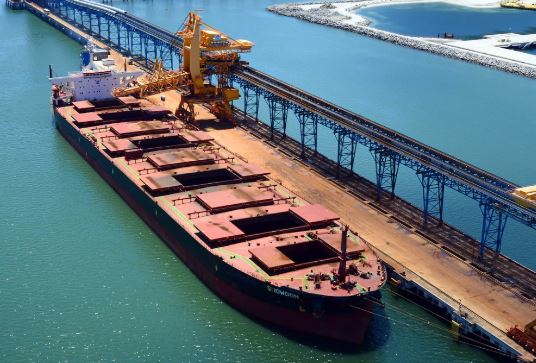Capesize freight rates dipped slightly on limited shipping activities and market expectation that it might bottom out after the recent slump.
Thus, the Capesize 5 time charter average then fell modestly by RMB 231 day-on-day to $15,550 on Friday, as the physical market seemed to find a floor, while the paper market braced for a rebound.
The Baltic Dry Index (BDI) then dipped slightly by 1.08% or 14 points to 1,283 readings, due to market expectation of better shipping demand ahead.
Freight market to rebound on improving sentiment
The improving market sentiment came from decent cargoes list in the Pacific basin, where mining majors were still active to move iron ore from west Australia to China routes.
There was also some demand to move Australian coals to India, after the informal ban on Australian coal imports to China.
However, it was more muted in the Atlantic market with only a few front haul trips being fixed as the indicative Capesize freight rates dropped around 25 cents to $15/wmt for the Tubarao to Qingdao route.
Market participants were concerned about the rising coronavirus cases as it impacted on the shipping activities, especially with stringent lockdowns being introduced back to Europe.
VLSFO prices slide on bearish sentiments
VLSFO prices continued to drop by $2/mt to $318/mt in the port of Singapore, due to bearish market sentiment on oil demand from higher coronavirus cases.
Brent crude prices had slipped under the $40 per barrel and headed toward $36 per barrel, while the WTI Crude prices slid toward $34 per barrel.
Due to the weak crude oil and bunker prices, market participants expected them to depress the freight rates further over the near term.
